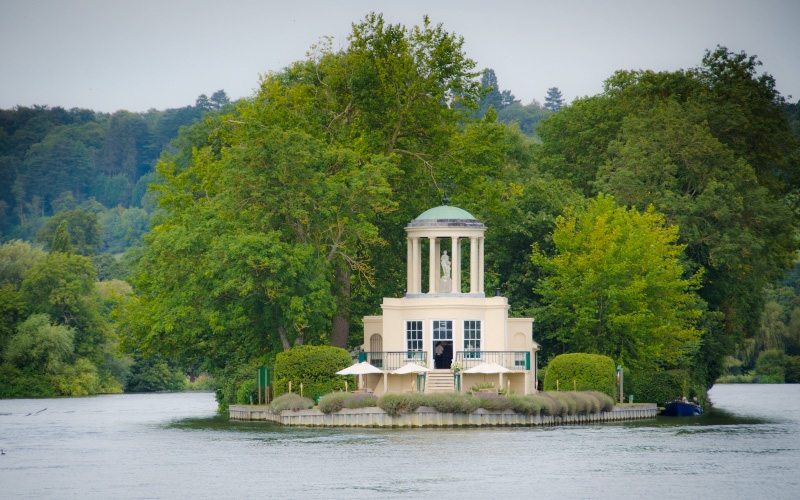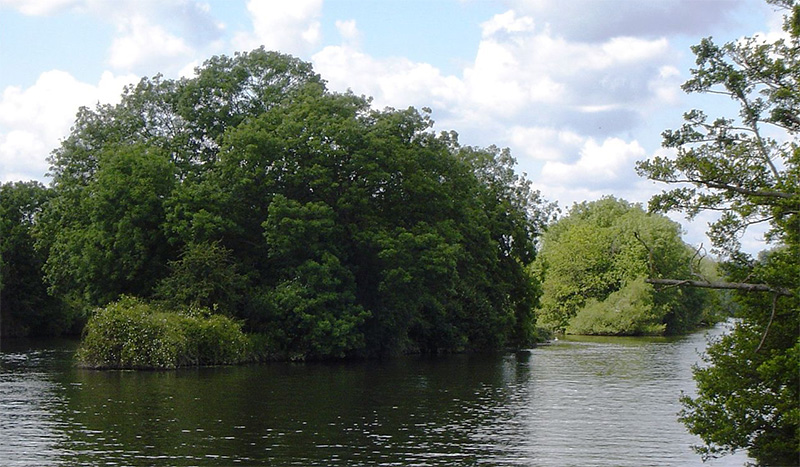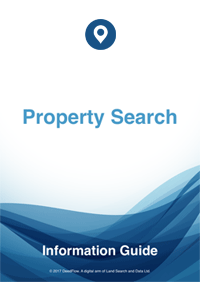Non-Tidal River Island Boundaries
Contents
Overview
England and Wales have thousands of non-tidal river islands, most of which are under an acre in size and located in streams and small rivers. Many of the islands are much larger, however, and have interesting ownership histories.
Common Law Presumption of Ownership
The Common Law assumes that the boundary of a non-tidal river island passes through the centre of the river and that the relevant sections of the island bisected by the centreline are owned by the adjacent riverbank owners. This follows the Ad Medium Filum Aquae rule, that the boundary of each riverbank extends to the centre-line of the river bed. Nevertheless, this presumption is rebuttable by evidence to the contrary.
Larger River Islands
Most larger islands (an acre or more) in England and Wales now have independent private ownerships which are readily discoverable by obtaining a Title Register and Title Plan search. Temple Island is one such example.
Independently Owned River Islands
Temple Island, River Thames
Temple Island is a riverine eyot. The term eyot, or ait, is particularly used to describe a small river island located in the River Thames. Temple Island is just over 1 mile north of Henley on Thames. It is part of a small chain of eyots, being upstream from Rod Eyot at Hambleden Lock and Magpie Island at Aston. Temple Island is an example of a river island that has been sold into private ownership by the riverbank owners in 1771. The island takes its name from the folly temple originally designed and built by James Wyatt, as a fishing lodge for Fawley Court, a nearby historic house. A long leasehold interest (999 years) in the island was first registered in 1988 and is now in the ownership of the Henley Royal Regatta following a re-registration in 2017.

The Title Register for this property is conclusive evidence of its private ownership, separate and distinct from the riverbank owners.
Presumptively Owned River Islands
One Presumptive Owner - Poplar Island, River Thames

Poplar Island is an example of a Thames eyot that is presumed by Common Law to belong to its respective riparian owners, that is, the respective riverbank owners on each side of the river. The eyot does not have a separate registration. In this case the south bank of the island appears to be just within the half-way mark of the north riverbank, which means that its entirety would be presumed to be part of the freehold title of Mapledurham Estate on the north riverbank. This is subject to rebuttal evidence to the contrary, which may possibly be found in the two Deeds that have been copied by the Land Registry, by the Titles of the parts of the Estate that have been removed from its ownership and/or by the Lease to the Caversham Heath Golf Club.
Two Presumptive Owners - Appletree Eyot, River Thames

In contrast to the foregoing, Appletree Eyot a little slightly downstream from Poplar Island and also unregistered, straddles the mid-way line of the Thames and would be presumed to be owned partly by Mapledurham Estate and partly by the Department of the Environment who own the opposite riverbank. The centreline of the river would be traced across the eyot to established the relative portions of ownership.
Title Register
The Land Registry Title Register holds data relating to the property ownership, purchase price, mortgage, tenure, covenants, rights of way, leases and class of title.
£19.95Title Plan
The Title Plan shows an outline of the property and its immediate neighbourhood, and uses colours to identify rights of way, general boundaries and land affected by covenants.
£19.95Associated Documents
Deeds creating Restrictions, Covenants, Easements, etc. are often kept digitally by the Land Registry and made available for sale due to their invaluable detail and content to assist in further understanding the Restrictions, etc.
£29.95


